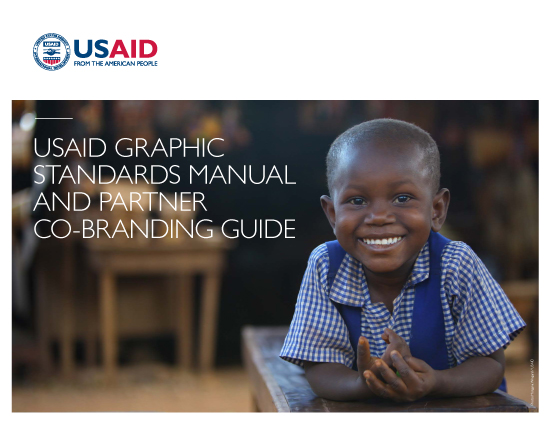- Work With USAID
- How to Work with USAID
- Partnership Opportunities
- Resources for Partners
- USAID Partners
- Acquisition & Assistance Ombudsman
- Compliance
- Acquisition & Assistance Policy Directives
- Archived Notices
- Indirect Cost Rate Guide for Non-Profit Organizations
- Procurement Executive Bulletins (PEBs)
- Implementing Partner Notices Portals
- Partner Vetting System
- Progress Report - Fiscal Year 2016
- Branding
- Get Involved
- Careers
USAID's framework legislation, the Foreign Assistance Act of 1961, as amended, section 641, requires that all programs under the Foreign Assistance Act be identified appropriately overseas as "American Aid."
Further, since 9/11, America's foreign assistance programs have been more fully integrated into the United States' National Security Strategy.
This elevation to the so-called "third-D" (development being added to diplomacy and defense) increased the need for U.S. foreign assistance activities to be more fully identified in the host country as being provided "from the American People." We have been identified as "America's good-news story" and have been tasked to make our efforts more visible and better known in the countries where we work.

Beneficiaries of U.S. aid receive billions of dollars of foreign assistance every year, often with little to no awareness that the assistance is provided by the American people. American aid is clearly one of the "good-news stories" overseas and yet too little attention has been paid to making that story visible.
Clear evidence of the value of the increased visibility of foreign aid came in the aftermath of the 2004/2005 U.S. tsunami relief effort, the first time USAID's new "brand identity" was used publicly.
According to a State Department study, in 2004, favorable opinions of the U.S. were at record lows in many Muslim countries. But, in early 2005, favorability of the U.S. nearly doubled in Indonesia (from 37 to 66 percent) thanks to the massive delivery of -- for the first time "well branded" -- U.S. foreign assistance.
A Pew Research study confirms this: "Positive opinions of the U.S. in Indonesia, which had plummeted to as low as 15 percent in 2003, also have rebounded to 38 percent. The U.S. tsunami aid effort has been widely hailed there; 79 percent of Indonesians say they have a more favorable view of the U.S. as a result of the relief efforts."
The Agency has separate, and different, branding policies and marking requirements for our implementing partners: one for Acquisition Awards (generally contracts,) and one for Assistance Awards (generally grants and cooperative agreements.) Click on either page to get the latest information. View the Graphic Standards Manual for usage guidance.
Branding Resources
Exception: In accordance with the USAID Administrator’s determination dated December 29, 2014, as authorized by ADS 320 and 2 CFR 700, and in line with USAID’s Graphic Standards Manual, additional or substitute branding and marking requirements may apply for USAID activities funded under the Feed the Future initiative. View the Feed the Future Graphic and Naming Standards Manual for guidance. Further guidance on how this may impact existing Feed the Future awards is forthcoming. Please visit http://feedthefuture.gov/branding for updates.
Exception: In accordance with the USAID Administrator’s determination dated October 14, 2016, as authorized by ADS 320 and 2 CFR 700, and in line with USAID’s Graphic Standards Manual, additional or substitute branding and marking requirements may apply for USAID activities funded under the Power Africa initiative. View the Power Africa Graphics Standard Manual for guidance. Please visit https://www.usaid.gov/powerafrica/graphic-standards-manual for updates.








Comment
Make a general inquiry or suggest an improvement.